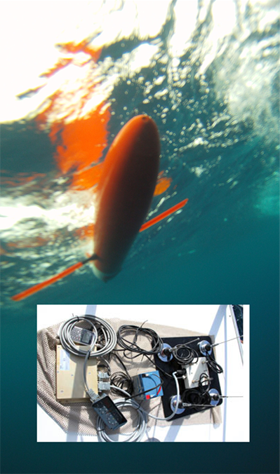Glider Research & Operation Center

The Glider Research & Operations Center is a collaborative project with Bluefin Robotics. Applications have includes the use of Bluefin’s SPRAY Gliders in support of the ecosystem health assessment at shelf edge deep reefs and in site assessment for thermal and hydrokinetic ocean energy applications in the Florida Straits.
Simplicity is an advantage if you want something to operate reliably for months on end in the oceans. The SPRAY glider does not require a thruster to propel it, dive, or surface; it accomplishes those actions by changing its balance point and its buoyancy.
Easy to deploy, the glider is launched from a boat into the water. Already programmed to carry out its first dive, the glider will roll onto its side, raise one of its two "wings" straight up into the air so that it can use its satellite phone link to register its position.
To dive, the glider makes itself less buoyant and shifts some of its weight forward. This causes it to sink, but its wings cause it to dive at a pre-determined angle. That glide path continues to a maximum depth of 1,000 m (3,280 ft).
To surface again, it makes itself buoyant (lighter than the surrounding water), and it shifts its balance point backward. This makes its nose rise, and again, the wings keep it on an upward glide path.
Once back at the surface, the glider rolls again to lift its wing so that it can link to a satellite and upload the data it has collected during the mission. Once the data have been received, glider technicians monitor its systems, make adjustments and send new mission data.
Spray glider related web sites:
